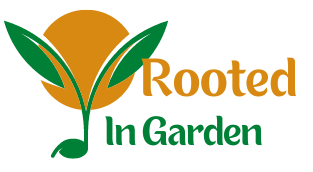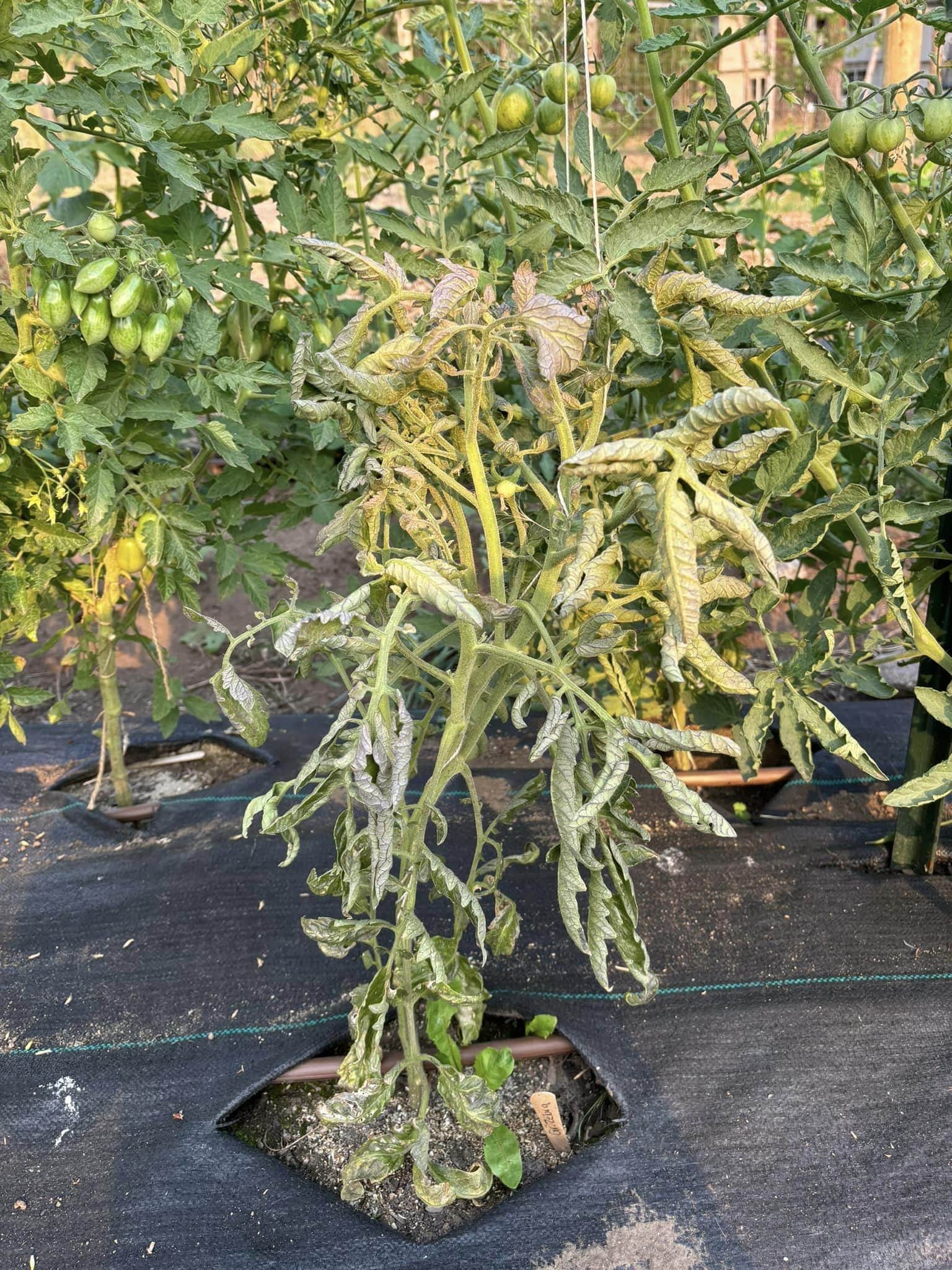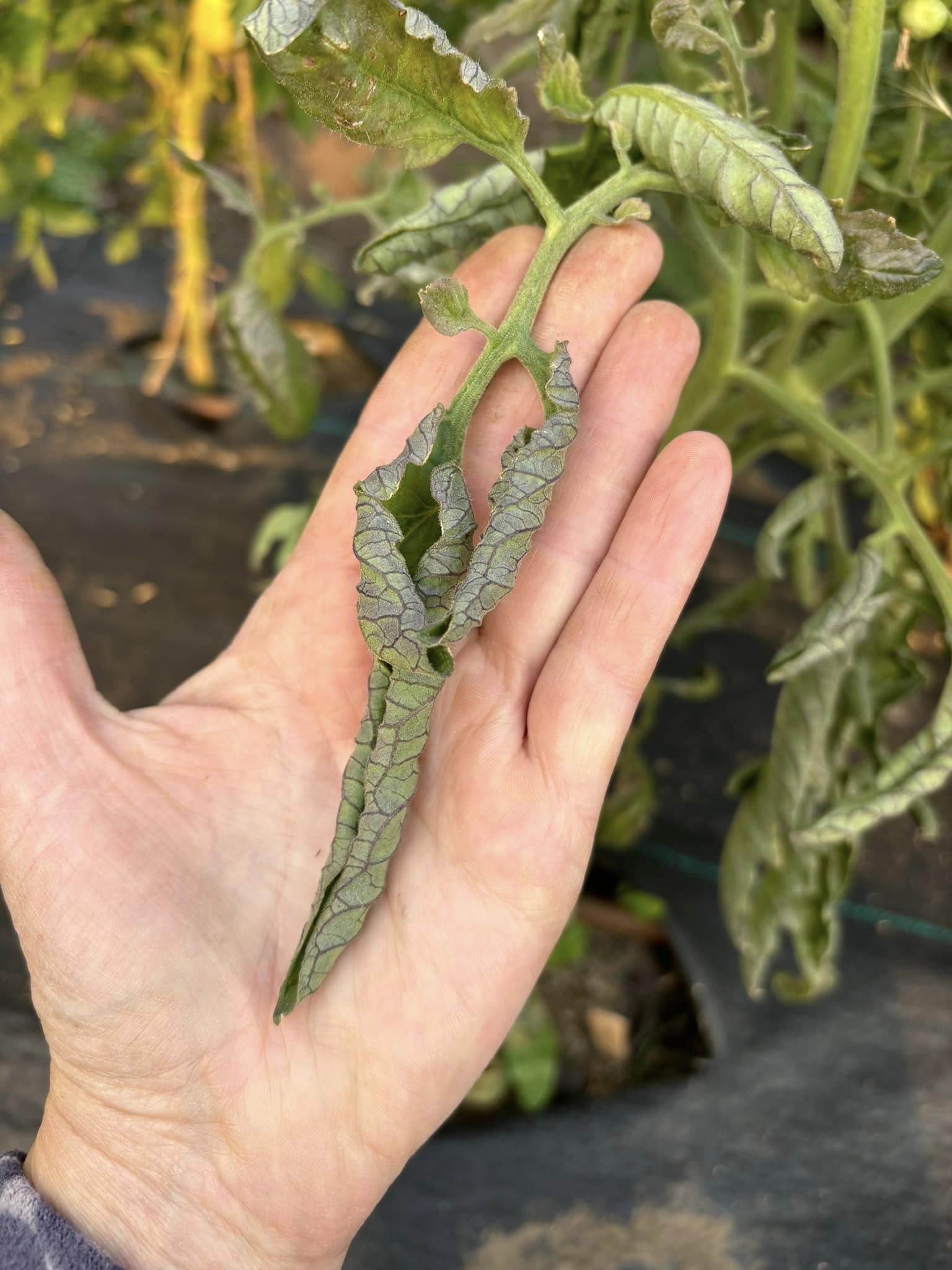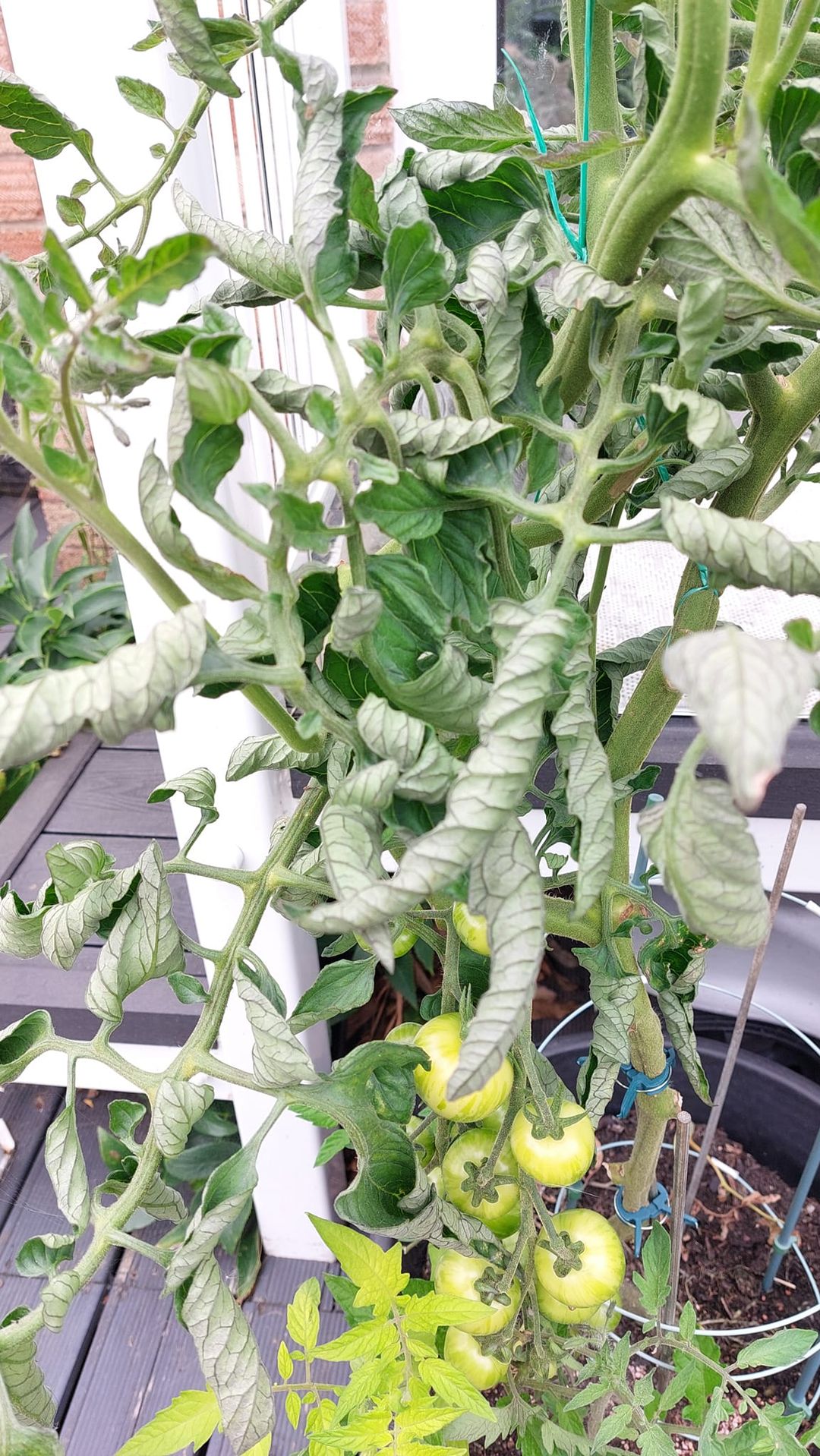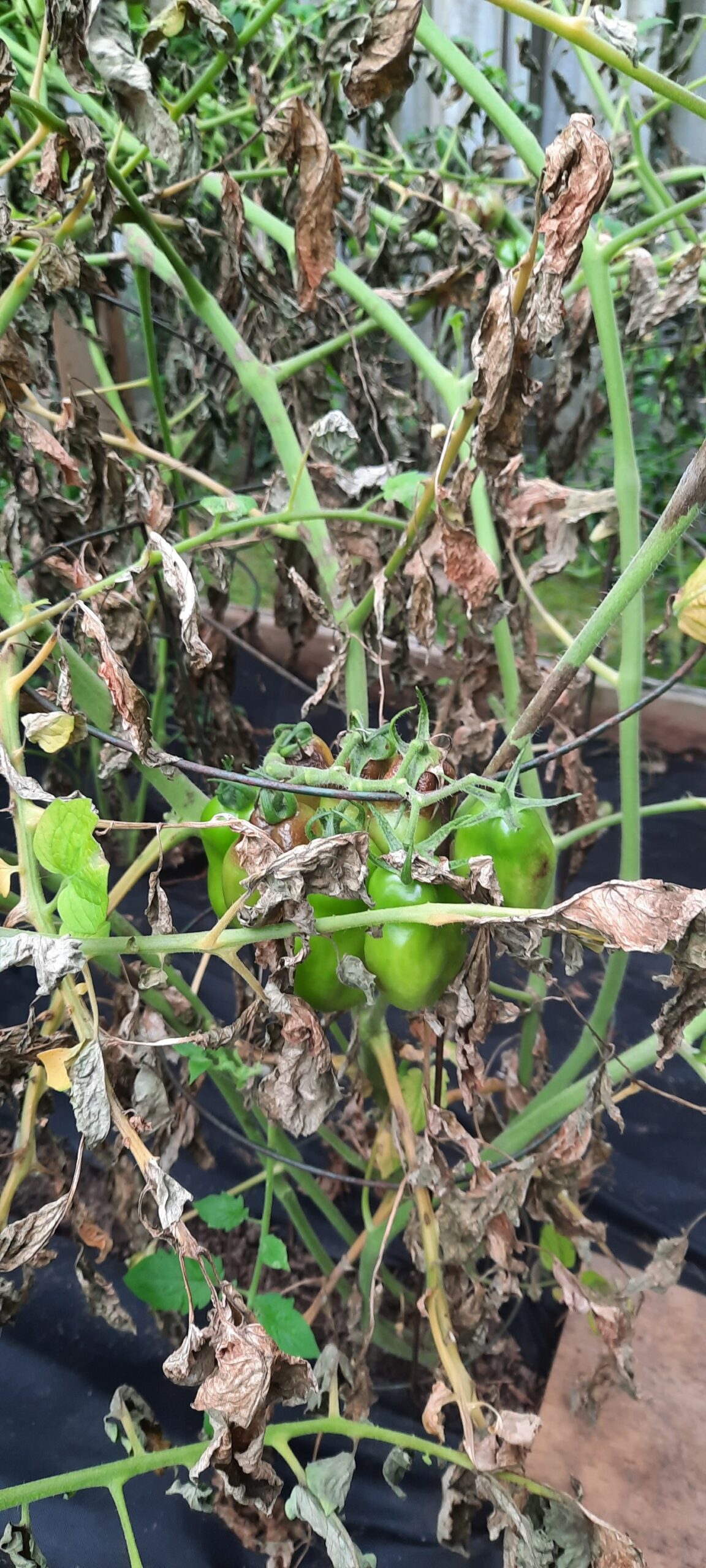Tomato leaf curl is more than just an aesthetic concern; it’s often a symptom of underlying problems. You need the leaves of your tomato plants to be healthy and lush to aid the production of those delicious tomato fruits.
Curled tomato leaves are a course for concern, but don’t worry; this doesn’t mean your plants are necessarily doomed, especially if you catch it early. So, why are your tomato leaves curling, and how can you fix them?
I endeavor to answer this question in detail in this guide. Therefore, continue reading to uncover the reasons behind your tomato leaf curl and save your plants.
8 Causes Of Tomato Leaves Curling And What To Do
1. Watering Issues
Growing tomatoes is reasonably easy, even for a gardening newbie. Get a pot, soil, water, and sunlight, and you’re ready to go. But there’s one thing you must be careful of when cultivating tomatoes—get the watering right.
Excess watering causes the roots to suffocate and lack oxygen. This stress often results in curling leaves, which may appear wilted or yellowed. On the other hand, too little water will cause the plants to become dehydrated, making the leaves curl as the plant tries to conserve water.
Solution
When it comes to watering your tomato plants, you cannot afford to get it wrong. For precision, utilize a water gauge or grow an indicator plant close by. Impatiens is a great choice, especially if your tomato plants shade it.
Water your tomato plants deep and regularly to moisten the soil evenly but not make it soggy. Use mulch to help retain soil moisture. Also, excess moisture will evaporate all day if you water early in the morning.
The leaves will curl under instead of upward for overwatered tomato plants. If that’s the case, give the soil some time to dry to give your plants time to recover.
Read More:
- Why Are My Tomato Leaves Turning Yellow?
- The Best Companion Plants For Tomatoes
- How To Get Rid Of Aphids In The Garden
2. Environmental Stress
Outside the stress of watering issues, another common reason for tomato leaves curling is environmental stress. Excessive sunlight, wind, and heat will make the leaves curl. Strong winds can physically damage leaves, causing deformities like curling.
The leaves will also curl to protect themselves from excess sunlight exposure. Too much heat has a similar effect. Although tomatoes love the sun, the plants will feel heat stress once temperatures get to 85 degrees.
Moreover, exposure to cold temperatures, especially sudden drops, can curl or distort the leaves.
Solution
- Heat and Sun Stress
Your plants should recover from excess heat and sunlight once the temperatures drop at night. However, if not, shade your plants with row covers or shade cloth. Also, apply mulch to help keep the roots cool and conserve moisture.
- Cold Protection
Shield your plants from cold temperatures, especially unexpected cold snaps, with cloches, row covers, or frost blankets. If you grow your tomatoes in containers, bring them inside or to a sheltered location during cold weather.
Alternatively, wait until the threat of frost passes before planting tomatoes outdoors if you live in a region with unpredictable spring weather.
- Wind Protection
Plant tomatoes near natural windbreaks such as hedges, fences, or buildings to reduce wind exposure. Use stakes, trellises, or cages for support and minimize wind damage. You can also erect temporary barriers like garden fabric or burlap screens.
3. Poor Nutrition
Thinking about the correct kinds and proportions of fertilizers for your tomato plant may seem daunting, especially for a newbie. The best tomato fertilizers have macronutrients such as nitrogen, potassium, and phosphorus, as well as micronutrients like zinc, calcium, and magnesium.
Nutrient deficiencies can cause your tomato leaves to curl. For instance, high nitrogen levels promote abundant growth of lush green foliage. Excessive leaf growth can cause leaves to curl downward or form a “claw” shape.
Low potassium and phosphorus can also cause leaf curl.
Solution
The issue of excess nitrogen should resolve itself over time if you stop introducing more fertilizers. A soil text will give you accurate information on the nutrient composition. Liquid fertilizers or foliar sprays help address nutrient deficiencies quickly.
Generally, fertilize in-ground tomato plants every 4-6 weeks during the growing season. For container-grown plants, do it once every 2-3 weeks. Use a balanced fertilizer.
4. Over Pruning
While pruning helps your tomato plants grow efficiently and healthily, it stresses them. Opinions are split when it comes to pruning tomato plants, but we can all agree that over-pruning causes problems, including leaf curl.
Solution
Avoid pruning determinate tomatoes once they flower, as it will hinder growth. If you must, only remove the leaves touching the ground. In contrast, gently prune indeterminate tomatoes throughout the growing season.
5. Herbicide Damage
Tomatoes, being broadleaf plants, are particularly vulnerable to herbicides, and while you can avoid exposing them to these chemicals, they can somehow become exposed to them. Even a small amount of herbicide carried by the wind from a neighboring field can cause significant damage to your tomato plants.
Fortunately, herbicide damage is rare and fairly easy to diagnose. The leaves curl downwards and twist dramatically around the stems. Unfortunately, branches and leaves affected this way cannot recover.
However, mild damage may not affect new growth, but this will still impact plant yield.
Solution
- Apply herbicides to the plants near your tomatoes cautiously, and don’t do it on windy days to avoid drift.
- Ensure the compost and mulch you apply to your tomato plants are free from herbicide contamination.
- If your neighbors use commercial herbicides, ask them politely whether they use clopyralid and aminopyralid. If they do, request that they notify you before they spray so that you can recover your plants. Alternatively, place your tomato garden in an area less likely to be hit by drift.
6. Pest Infestation
Pests are part of a healthy ecosystem, but your tomato plants will suffer if the infestation gets out of control. Pests cause different issues in plants. The ones that make tomato leaves curl are sap-sacking pests. These include whiteflies, aphids, and spider mites.
Aphids suck tomato plants’ sap, causing leaf curling and distortion. Like aphids, whiteflies feed on plant sap and excrete honeydew, causing curling and sooty mold. On the other hand, spider mites feed on the leaf underside, causing stippling, curling, and yellowing.
Solution
- Spray insecticidal soap or neem oil on affected plants.
- Foster a biodiverse environment; this way, beneficial insects like lacewings, spiders, and ladybugs will be encouraged to reside in your garden, where they’ll feast on pests that attack your tomatoes and other plants.
- Capture pests like whiteflies with yellow sticky traps.
- Plant companion plants such as marigolds, chives, nasturtiums, and basil. Grow these plants weeks before growing your tomatoes to give them sufficient time to make a difference.
- Remove pests manually.
- If all else fails, dispose of the infected plants.
7. Diseases
A number of diseases can afflict your tomato plants and cause the leaves to curl. The common ones are curly top virus and tomato leaf leaf curl virus. Unfortunately, viral plant infections are seldom treatable, and by the time you notice the symptoms, your plant is normally at a total loss.
- Curly Top Virus
This destructive disease can affect over 300 species of plants, including tomatoes. Beet leafhoppers transmit curly top virus. Your tomato plants are likely infected by this virus if the leaves thicken, curl up, twist, and turn yellow with purplish veins.
Along with the curling, this virus causes stunted growth, and if the plant does manage to produce fruit, it might be deformed, under-sized, or have poor flavor. The first indications of this disease are leaf discoloration and curl.
Solution
By far, prevention is the most effective solution for the curly top virus, as chemical and organic treatments don’t work. However, should your plants get infected, remove and destroy them to halt the virus from spreading. Don’t compost the infected plants.
Covering your tomato plants with netting or fine mesh protects them from leafhoppers.
- Tomato Yellow Leaf Curl Virus (TYLCV)
As the name suggests, this disease makes leaves curl up, and the edges turn yellow and assume the shape of a shallow bowl. The leaves may also develop spotted patterns, and the insides of the fruits may be slightly brown.
Whiteflies transmit TYLCV, and like the curly top virus, it causes stunted plant growth and reduces fruit production.
Solution
Dispose of infected plants and control whitefly populations with insecticidal soap, neem oil, or natural predators.
8. Transplant Shock
Plants undergo stress that could lead to leaf curling when transplanted. If you notice your tomato plant leaves curl after you’ve recently transplanted them, the cause could be transplant shock.
Solution
Tomato plant roots are delicate, so be gentle when transplanting. Also, handle your plants by the root ball rather than the stem or leaves to minimize damage and plant them deep (bury part of the stem).
Give plants already undergoing transplant shock tender love— avoiding imposing extra stress on them until they recover.
Conclusion
Leaf curling is typically the initial sign that something is wrong with your tomato plants. You can easily remedy this problem, but first, understand the root causes. Of course, causes like viral diseases are tougher to handle. Spend time in your garden regularly to stay on top of these issues.

Hey there, fellow plant enthusiasts! I’m Rachel, the green-thumbed writer behind Rooted In Garden. With a deep-rooted love for all things botanical, I’ve made it my mission to help you cultivate a thriving collection of houseplants. As a devoted plant parent myself, I understand the joys and challenges that come with nurturing these leafy wonders. Whether you’re a succulent aficionado, an orchid enthusiast, or simply adore all potted flora, join me on this journey as we explore the secrets to growing and caring for our beloved green companions. Together, let’s create a flourishing oasis indoors.
